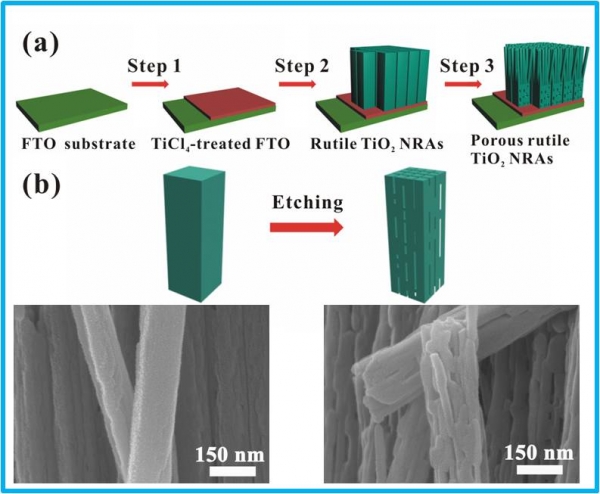Xiamen University Research Group Nanorod Array Sensitized Battery Efficiency Up to 7.91%
Professor Lin Changjian of the School of Chemistry and Chemical Engineering of Xiamen University has developed a method for preparing photoanodes of high specific surface area porous single-crystal rutile TiO2 nanorod arrays, and greatly improved the photoelectric conversion efficiency of such photoanode materials for dye-sensitized solar cells. . Related results were published in the journal Energy Environ. Sci. Previously, the research group also published research results on Cu2O nanoparticles-loaded TiO2 nanotube array pn heterojunction photoelectrode.

Single-crystal rutile TiO2 nanorods with one-dimensional array structure have many unique photoelectric properties, and have been widely used in photocatalysis, hydrogen production by photolysis, super light and ultra-light self-cleaning layers, sensors, and dye-sensitized solar energy. Environmental research. Although many studies have been devoted to increasing the specific surface area of ​​single crystal rutile TiO2 nanorod array films, how to develop an effective, environmentally friendly preparation method with excellent overall performance remains a challenge. Based on the existing research, Prof. Lin Changjian's research group reported for the first time that through a simple hydrothermal method combined with subsequent chemical etching, the surface of the transparent conductive glass substrate has a strong specific surface area and a high specific surface area of ​​about 20 μm. The single-crystal rutile TiO2 nanorod array film has achieved photoelectric conversion efficiency of 7.91% in the application of dye-sensitized solar cells. This is the highest efficiency reported in dye-sensitized solar cells based on rutile TiO2 nanorod array films at home and abroad.
The study was conducted under the guidance of Prof. Lin Changjian and was jointly completed by the master student Lu Miaoqiang (first author) and other graduate students. The research work was supported by the National Natural Science Foundation of China, the Ministry of Science and Technology and the Science and Technology Department of Fujian Province.
Die Casting Camera Housing Parts
1) Material: Aluminium, zinc;
2) Customers' designs are welcome;
3) OEM/ODM orders are welcome;
4) Die casting machine part of CNC machining precision for Camera Housing Parts;
5) Edges & holes deburred, Surfaces free of scratches;
6) The most advanced test equipments to ensure the quality;
7) Price are strictly based on your design and requested quantity;
8) 100% inspection before delivery.
9) We are focused on cost savings, quality and on time delivery.
Die Casting Camera Housing Parts Processing
Drawing/Model→→2D/3D
Description→→Confirmation of mould design→→Mould stand modeling→→Rough
machining→→Vacuum heat treatment→→Fine machining→→Liner cutting
processing→→
Electric spark discharge→→Mould polish→→Mould assembly
Advantages
Experienced Staff ; Prompt Delivery; Quality Approvals; Good sales service.
We can make all kinds of Die Casting Parts according to customers' design drawings. If you have any requirements
please contact to me directly. I will do my utmost ability to service
for you !
Whether you are currently purchasing overseas or you would like to find a reliable source, we will be your best choice.
Die Casting Camera Housing Parts
Aluminium Cctv Housing,Die Casting Camera Case,Aluminium Cctv Parts
Ningbo Bowang Machinery Co.,Ltd , http://en.zjbwjx.com